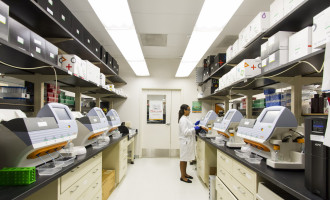
Scientists at the Nano Life Science Institute (WPI-NanoLSI), Kanazawa University and colleagues have developed a promising new approach to cancer treatment.
By using tiny, naturally occurring particles called extracellular vesicles (EVs), they have created a way to boost the body’s immune system to fight tumours more effectively.
This breakthrough could lead to more targeted cancer therapies with fewer side effects.
The study, published in Journal of Extracellular Vesicles, was led by Rikinari Hanayama.
The research team developed a special type of engineered EVs, called antigen-presenting extracellular vesicles (AP-EVs), that activate immune cells inside tumours.
These AP-EVs carry key immune-boosting signals, helping T cells—the body’s natural cancer fighters—recognise and attack tumours more effectively.
This new approach enhances immune responses while reducing harmful side effects often seen in traditional cancer treatments.
Background
Many modern cancer treatments, such as immune checkpoint inhibitors and cytokine therapies, help the immune system fight cancer.
However, these treatments can sometimes harm healthy tissues and cause severe side effects.
Extracellular vesicles (EVs) are tiny, bubble-like structures naturally produced by cells to communicate with each other.
Scientists have recently explored their potential as a targeted drug delivery system.
In this study, researchers successfully modified EVs to directly deliver immune-activating molecules to tumour-fighting T cells, improving treatment effectiveness while reducing risks.
How the Research Was Conducted
The researchers tested their engineered vesicles using cell culture experiments and mouse models, analysing their effects with imaging, flow cytometry, and molecular assays to track immune responses and tumour growth.
By observing how immune cells reacted to AP-EVs, they confirmed that these vesicles could selectively stimulate T cells and enhance their tumour-fighting ability.
Advanced imaging techniques also showed that AP-EVs accumulated in tumours, making them a promising tool for targeted cancer therapy.
Key Findings
A New Approach to Cancer Treatment
Unlike traditional immunotherapy, which can cause broad immune activation and unwanted side effects, AP-EVs provide precise targeting of tumour-fighting T cells, leading to tumour eradication without harming healthy tissue or causing other unwanted side effects. AP-EVs also have the potential to improve the effectiveness of immune checkpoint inhibitors, and other T-cell therapies.
“This discovery is an important step toward using natural biological tools to improve cancer treatment,” says Hanayama, lead author of the study.
“By using extracellular vesicles, we can enhance immune responses with fewer side effects, potentially leading to better outcomes for patients.”
Next Steps
The research team is now working on optimising AP-EVs for clinical trials and exploring their use for other types of cancer and personalised medicine.
Source: Nano Life Science Institute (NanoLSI), Kanazawa University